This article was first published on the CounterPunch website
The breathlessly awaited government report that promised to shore up public confidence by explaining why the stock market briefly plunged 998 points on May 6, with hundreds of stocks momentarily losing 60 per cent or more of their value, was released last Friday, October 1. Its neatly crafted finger-pointing to a small Kansas mutual fund firm which has been around since 1937 was immediately embraced as “mystery solved” by the stalwarts of the corporate press. This was done with only slightly less zeal than bestowed on the story of Saddam Hussein’s weapons of mass destruction spun out of the George W. Bush administration.
The New York Times headlined with “Single Sale Worth $4.1 Billion Led to Flash Crash.” The Washington Post went with “How One Automated Trade Led to Stock Market Flash Crash.” The Wall Street Journal led with “How a Trading Algorithm Went Awry.” Hundreds of similar headlines followed in similarly expensive media real estate. But as with the rush to war on bogus intel, the corporate press may be further damaging its credibility with the American people by ignoring the dangerous market structure that emerges in a closer reading of this report.
The so-called Flash Crash report was the product of the Commodity Futures Trading Commission (CFTC) and Securities and Exchange Commission (SEC) and consists of 104 pages of data that is unintelligible to most Americans, including the media that are so confidently reporting on it. It names no names, including the firm it is fingering as the key culprit in setting off the crash. Earlier media reports say the firm is the mutual fund manager, Waddell and Reed, and Waddell has conceded that it made a large trade that day to hedge its positions in its mutual funds which total $70 billion according to its web site.
As the official report goes, Waddell set off a computerized algorithm to sell 75,000 contracts of the E-mini futures contract that is based on the Standard and Poor’s 500 stock index and trades at the Chicago Mercantile Exchange. At roughly $55,000 per contract, the total amount Waddell was seeking to sell to hedge its mutual fund stock positions was $4.125 billion.
But here’s where the official theory comes apart: fourteen days after the Flash Crash, Terrence Duffy, the Executive Chairman of the CME Group which owns the Chicago Mercantile Exchange testified before the U.S. Senate’s Subcommittee on Securities, Insurance, and Investment of the Committee on Banking, Housing and Urban affairs that “Total volume in the June E-mini S&P futures on May 6th was 5.7 million contracts, with approximately 1.6 million or 28 per cent transacted during the period from 1 p.m. to 2 p.m. Central Time.” In other words, the government investigators are suggesting that a trade that represented 1 per cent of the day’s volume in a futures contract in Chicago and less than 5 per cent of contracts traded in the pivotal 1 to 2 p.m. time frame in Chicago (2 to 3 p.m. in New York) caused stocks in the cash market to plunge to a penny.
Of the 104 pages of the report, there is one sentence that is noteworthy:
“Detailed analysis of trade and order data revealed that one large internalizer (as a seller) and one large market maker (as a buyer) were party to over 50 per cent of the share volume of broken trades, and for more than half of this volume they were counterparties to each other (i.e., 25 per cent of the broken trade share volume was between this particular seller and buyer).”
Broken trades or “busts” (as the street refers to them) were only allowed for trades occurring between 2:40 p.m. and 3 p.m. (New York time) and where the stock had moved 60 per cent or more from its 2:40 p.m. value. This was an extremely controversial decision and left small investors with heavy losses of 30 to 59 per cent with nowhere to turn. The busts that were allowed covered 5.5 million shares and two-thirds of these trades had been executed at less than $1.00, some for as little as a penny. We now learn from this one sentence on page 66 of the Flash Crash report that half of the share volume in these bizarre trades came from just two firms and half the time they were exclusively trading with each other. Let me state this another way: two trading firms were predominantly involved in handing investors’ losses of 60 per cent or more in their stocks on May 6 but a staid old mutual fund company trading an S&P futures contract in Chicago has been fingered as the culprit of the Flash Crash.
An “internalizer” is a benign way for the SEC to acknowledge that the big brokerage firms serving retail customers (which have morphed into investment banks and commercial banks as well) are running their own secretive, quasi stock exchanges inside their firms. They are matching their retail customers’ buy and sell orders with no public transparency. Only after the trades are matched out of public view are the trades then printed at an exchange. Clearly, anyone carefully reading the above sentence from the report wants to know the names of these two entities. But in the report they remain nameless.
Another key area that gets short shrift in the report is quote stuffing, a practice by high frequency traders to blast out millions of bids to buy and offers to sell specific stocks, only to cancel them fractions of a second later. Mary Schapiro, Chair of the SEC, told the Economic Club of New York the following on September 7:
“These high frequency trading firms can generate more than a million trades in a single day and now represent more than 50 per cent of equity market volume. And many firms will generate 90 or more orders for each executed trade. Stated another way: a firm that trades one million times per day may submit 90 million or more orders that are cancelled.”
What’s the science behind cancelling 90 orders to get one trade done? If you blast out millions of orders in microseconds, then cancel them just as fast, you are confusing your competition as to what your true intention is. Your competition learns from this and fires a similar volley back at you. (Left in the blaze of digital ticker tape is the average investor, who doesn’t own a trading algorithm.) Questions are being asked as to whether some of these practices may constitute market manipulation, similar to painting the tape, where the sole purpose of the order is to mislead the market. If retail stockbrokers tried doing this for the small investor, they would be expeditiously led off in handcuffs.
Four days before the official Flash Crash report was released by the CFTC and SEC, Nanex, a creator and developer of a streaming datafeed that brings trading prices to workstations in real-time, put out its own impressive analysis of the Flash Crash. Among numerous areas covered, Nanex highlighted significant quote stuffing that occurred on May 6. (The full report is available at www.Nanex.net) Among the findings of Nanex:
“While searching previous days for similarities to the time period at the start of the May 6th drop, we found a very close match starting at 11:27:46.100 on April 28, 2010 — just a week and a day before May 6. We observed it had the same pattern — high, saturating quote traffic, then approximately 500ms later a sudden burst of trades on the eMini and the top ETF’s [Exchange Traded Funds] at the prevailing bid prices, leading to a delay in the NYSE quote and a sudden collapse in prices. The drop only lasted a minute, but the parallels between the start of the drop and the one on May 6 are many.”
A potential implication of the Nanex report is that by blasting out bogus quote data, the data feeds carrying stock prices to investors could be slowed down, giving an edge to traders who understand what’s actually happening.
Mr. Duffy of the Chicago Mercantile Exchange had voiced a similar area of potential concern taking place in the futures market on May 6 in his Senate testimony, noting that 3 million system messages occurred around the trading meltdown. According to Mr. Duffy, the exchange has “implemented automated controls which monitor for excessive new order, order cancel and order cancel/replace messaging. If a session exceeds a designated message per second threshold over a three-second window, subsequent messaging will be rejected until the average message-per-session rate falls below this threshold.”
I asked Eric Scott Hunsader of Nanex for his thoughts on the Flash Crash report, given that quote stuffing was glossed over. Mr. Hunsader said that he believed the report to be “riddled with inconsistencies, makes conclusions without supporting evidence, and wastes precious time on illustrations that end up telling us nothing we didn’t already know. Looking for the cause of the xFlash Crash using one-minute snapshot data is like trying to find the Higgs boson with a 10x microscope.” Mr. Hunsader goes on to note the “NYSE’s admission of the delay we discovered in June; however, the executive summary tells us regarding this delay: ‘Our findings indicate that none of these factors played a dominant role on May 6.’ Later in the report, the findings presented in making that determination are only anecdotal: we would have expected to see a per centage break down of the traders affected, for example.”
The official report does not break out the wealth destruction to the small investor on May 6, but Ms. Schapiro shared that information on September 7 with the Economic Club of New York: “A staggering total of more than $2 billion in individual investor stop loss orders is estimated to have been triggered during the half hour between 2:30 and 3 p.m. on May 6. As a hypothetical illustration, if each of those orders were executed at a very conservative estimate of 10 per cent less than the closing price, then those individual investors suffered losses of more than $200 million compared to the closing price on that day.”
A stop-loss order is the dull Boy Scout knife with which the small investor attempts to protect himself from the star wars gang. It is an order placed with an unlimited time frame that sits in the system and says if my stock trades down to this level, sell me out. Unfortunately, most of these orders are placed as market orders rather than indicating a specific “limit” price that the investor will accept. (That alternative order is called a stop-loss limit order.) Stop-loss market orders go off on the next tick after the designated price is reached. In a liquid and orderly market, that should be only a fraction away from the last trade. On the day of the Flash Crash during that pivotal half hour, the next tick was frequently 10 to 60 per cent away from the last trade.
Quite contrary to restoring confidence to investors, the Flash Crash report has unmasked what many of us have suspected but couldn’t prove until this report proved it for us. While the fancy dressers in the Wall Street investment banks were absorbed in building warehouses of subprime mortgage fireworks that dazzled right up until the moment they blew up the street, techies in blue jeans were building star wars trading technologies in the bowels of Wall Street with a sole set of marching orders: beat the competition.
The marching orders to make these trading programs transparent, friendly to the small investor, fair and orderly, were noticeably absent from the job assignment. And as the new technology proliferated, showing ever greater speed, opacity, and fragmentation, the regulators stood down as the abuses mushroomed. The regulators were cowed by the same threat that Wall Street has used successfully in gutting regulation of derivatives and repealing the Glass-Steagall Act: if you don’t let us do it, we’ll move our trading business to another country. (In my early days on Wall Street, I was similarly threatened by a branch manager to sell a dubious limited partnership to my clients. He said, “If you don’t, some other broker will.” I smiled and gently nodded in anticipation of just that eventuality. The majority of those late 1980s limited partnerships blew up, taking broker careers and firm reputations with them. The mantra remains unchanged today on Wall Street: push short term profits and ignore long-term reputational risk to the firm and loss of investors’ savings and confidence.)
A search of the U.S. Patent and Trademark Office turns up thousands of patents with star wars diagrams of computers linked in incomprehensible ways to replace human traders. The patents are held by Goldman Sachs, Morgan Stanley, Citigroup, Merrill Lynch and numerous other firms that were bailed out by the U.S. taxpayer for their last innovation that attempted to spin subprime mortgages into gold.
This is an abstract for a patent held by ITG Software:
“A computer-implemented system and method for executing trades of financial securities according to a combination passive/aggressive trading strategy that reliably executes trades of lists of securities or blocks of a single security within a desired time frame while taking advantage of dynamic market movement to realize price improvement for the trade within the desired time frame. A passive trading agent executes trades at advantageous prices by floating portions of the order at the bid or ask to maximize exposure to the inside market and attract market orders. An aggressive agent opportunistically takes liquidity as it arises, setting discretionary prices in accordance with historical trading data of the specified security.”
Does this sound like something the small investor could compete with?
The market is also dangerously fragmented. SEC Chair Schapiro describes it this way, throwing out the confidence-draining words “dark pools” with the casualness that she might utter, “tea anyone?” The regulated New York Stock Exchange, which commanded an 80 per cent market share just five years ago, today “executes approximately 26 per cent of the volume in its listed stocks. The remaining volume is split among more than 10 public exchanges, more than 30 dark pools, and more than 200 internalizing broker-dealers. Indeed, today, nearly 30 per cent of volume in U.S.-listed equities is executed in venues that do not display their liquidity or make it generally available to the public. The percentage executed by these dark, non-public markets is increasing nearly every month.”
And exactly what has all this star wars trading innovation on Wall Street done for the average investor? According to the Wall Street Journal, the Standard & Poor’s 500 stock index “has fallen at an annualized rate of 3 per cent a year over the past 10 years, including dividends and controlling for inflation.” The index itself, closing last week at 1146, is back to the level it set in July of 1998; 12 years of believing in the illusion that Wall Street planned to share its wealth.
This article was first published on the CounterPunch website, Martens’ journalistic home base, where she has investigated the Flash Crash in a pioneering series.
Pam Martens worked on Wall Street for 21 years; she has no security position, long or short, in any company mentioned in this article. She writes on public interest issues from New Hampshire. She can be reached at pamk741@aol.com
More on the Flash Crash by Pam Martens in CounterPunch here:
The May 6 Stock Crash Revisited, May 12, 2010
http://www.counterpunch.org/martens05122010.html
SEC Admits to Inadequate Tools to Conduct Investigation, May 17, 2010
http://www.counterpunch.org/martens05172010.html
Scientists, Secrets and Wall Street’s Lost $4 Trillion, September 27, 2010
http://www.counterpunch.org/martens09272010.html
Read more: cftc, flash crash, mary schapiro, sec, waddell and reed, Pam Martens, Banking Porn


Got something to say to us? Then send us a letter.
Want us to stick around? Donate to The eXiled.
Twitter twerps can follow us at twitter.com/exiledonline




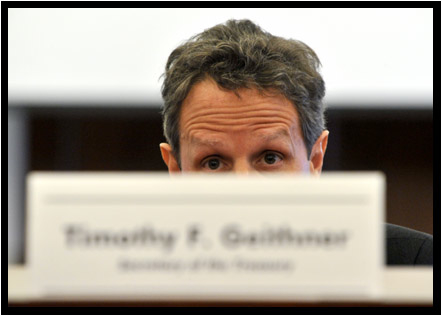
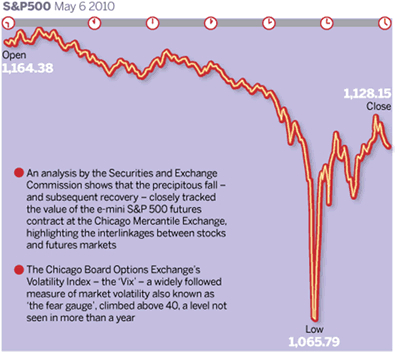

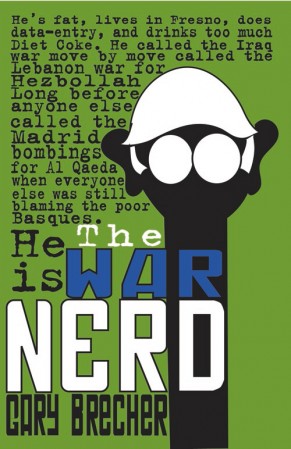

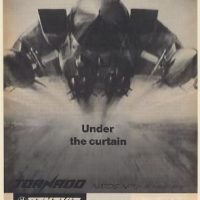




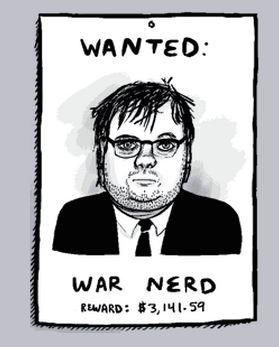


14 Comments
Add your own1. Soj | October 14th, 2010 at 8:48 pm
Wow….
2. Lavrentij "Anarchy99" Lemko | October 15th, 2010 at 4:24 am
Sounds like a “due diligence” case, if anybody gave a damn. If only Eliot Spitzer hadn’t been caught with his pants off and socks on. I wish I had that kinda cash to spend on Ashlee Alexandra Dupree, though, the scandal would then have destroyed a governorship of the Empire State that I never had a chance of having. But at least I’d have sweet memories of Ashley, mmmm hmmm.
http://www.youtube.com/watch?v=1j2esw2B8TI&feature=player_embedded#!
“What happens when the children are in charge”?
3. The Flash | October 15th, 2010 at 6:14 am
Good article. Hope you do more articles that show up on the Exiled.
The sad part is, though, that even after dumbing it down, there’s always that acknowledgement that we can only know so much as journalists will allow.
Unless you’re well versed in financial manipulation, the average reader can’t know if even you know what you’re talking about or telling the truth.
4. wYSeguy | October 15th, 2010 at 10:27 am
The war of the Super Ultra Rich on the merely Rich.
5. a | October 15th, 2010 at 5:35 pm
So you mean like cuz virtually everyone at the highest level of government financial institutions came directly from Goldman Sachs, then like there’s something fishy there, and like Goldman Sachs gets away with controlling and ruining the world economy?! Call Pulitzer!
6. David | October 16th, 2010 at 1:19 am
wasn’t this one of the conclusions of the inquiry? — this is a normal part of the market now, these sorts of events
7. Jacob | October 16th, 2010 at 10:59 am
This article is just another confirmation that speculating in stocks generally does not pay off, specially for small investors. The standard academic advise (that’s all corroborated by decades of evidence, something that most brokerage houses and investment funds don’t want you to know) is that holding a combination of a “market” portfolio and a government bond fund will beat most of speculators or actively managed funds. Simply state, it’s pretty damn hard, and probably just random to be able to beat the market. So, just put your money into an S&P 500 fund, and Treasury bond fund, and forget about those all greedy suckers who lose their sleep over daily stock price movements. A sane person should worry about portfolios performance over the years, not days or weeks. The truth is that the impatient get rich fast investors usually get burned and lose their shirts.
8. Dammerung | October 17th, 2010 at 10:00 am
Good article. Most of the money in the stock market isn’t average Americans investing long-term for their retirement in stable, growing companies; but is instead a Wall St. shell game the Super Ultra Rich are playing on everybody.
9. wellclosed | October 18th, 2010 at 5:19 am
Dammerung’s SUR are not “playing” on everybody; they are (in a favorite Peter Greenaway image) urinating. And we think it’s some new meteorological phenomenon engineered for enhanced agriculture.
10. chugs | October 18th, 2010 at 3:59 pm
ah fuck em. either the bullshit system will dislocate reality and become its own reality or it’ll fail utterly to the death and doom of zillions.
either way we’re on one hell of a ride. i just find it annoying they won’t tell us what scams they’re up to know.
its not like we have any power to stop them (as it is plainly obvious to all and sundry).
11. Bill in PA | October 18th, 2010 at 7:07 pm
Crooks all.
SEC and associated regulators: Epic fail.
12. JRL | October 21st, 2010 at 6:48 am
Gotta agree in principle with Jacob,
but in specific I think that the market
funds under-perform long term.
My strategy is to watch companies I like
for technical reasons (like, wow Red Hat
is supporting good software really well),
wait for them to hit some kind of glitch
that hurts the stock, then buy a bunch of it.
Repeat about 80-200 times, wait for the stocks
to triple up (sometime it’s days, sometimes
it’s years, sometimes it’s a bust) and sell
1/3 of it.
Lather rinse repeat…
Bonds used to be a useful side hedge,
but they are worthless now because of
the pointless amount of interest they pay.
13. woundedduck | October 22nd, 2010 at 7:22 pm
You’ve got to be a trader with a dark pool to understand what the hell this article is saying. Exiled, talk to me like I’m a two-year-old.
14. lcl | October 29th, 2010 at 3:54 pm
I feel like such an idiot for asking this but…
anybody care to summarize the relevant points of this article in a sentence or two?
Leave a Comment
(Open to all. Comments can and will be censored at whim and without warning.)
Subscribe to the comments via RSS Feed